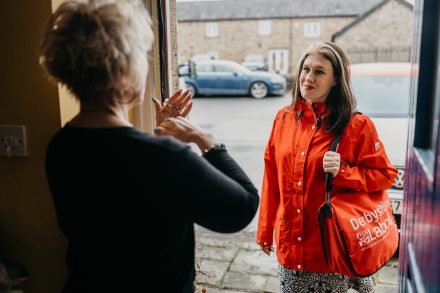
Keir Starmer will be appointing his first cabinet over the coming hours. He last reshuffled his shadow cabinet in September 2023, though many have been in post for longer.
Compared to Blair’s transition in 1997, Starmer’s top team have more ministerial experience between them – – but there is still the potential for change, which may affect what the cabinet looks like and how effective they will be at their jobs.
How experienced will the cabinet be?
Seven members of the shadow cabinet have been ministers in the past, compared to only five of Blair’s first cabinet. Of those seven, Hilary Benn, Yvette Cooper and Ed Miliband have all previously headed up their own departments – and if Miliband is appointed as energy secretary this afternoon, this will be his second time doing the role.
Read more general election coverage (article continues below):
Liveblog: Live updates, analysis and reaction to Labour landslide
Labour results tracker: Full list and map of Labour gains, holds, losses, new MPs
‘We did it’: Keir Starmer’s victory speech as Labour crosses key 326 seat line
Liz Truss loses South West Norfolk: Beaten by a lettuce, beaten by Labour
Luke Tryl: ‘Labour’s won back the electorate’s confidence: now it needs to shake up the status quo’
‘What should we look for in Keir Starmer’s cabinet?’
This familiarity with government will be valuable, since being a minister is vastly different to shadowing the role. When Harriet Harman became secretary of state for social security in 1997, the change in mindset from campaigning to governing was drastic: “Blimey, I haven’t a clue whether I want these huge computer projects to go ahead or not … I have just been going round urging people to vote Labour.”
Members of the new cabinet will be making life-changing decisions every day and leading departments of hundreds or thousands of civil servants. As former home secretary Jacqui Smith told the Institute for Government, “one of the shocks of ministerial life is the speed with which decisions need to be taken”.
Having an idea of how government works – from working with their private office, handling submissions, or dealing with correspondence – will help them to hit the ground running. But even for those who have been in government before, it will look different to when they left in 2010. The Home Office has grown by about 70% over the last 14 years, while the Department for Work and Pensions has shrunk by around 28%.
The way government runs has changed, too – WhatsApp wasn’t part of the policy process in the 2000s. Civil servants will need to brief new ministers well about what the role involves, while ministers will need to consider how they want to get the most out of the government machine.
Hilary Benn’s ministerial colleagues could benefit from heeding his warning and carving out opportunities for reflection: “if you’re in the moment, going from engagement to engagement, box to box, you don’t always get the time to think and you need to do that.”
How much continuity will there be?
There are downsides to moving around cabinet briefs on entering government. Shadow ministers will have had access talks with their departments in the run-up to the election, to allow civil servants to plan for their future ministers’ priorities and be able to deliver from day one. Many of those who Blair kept in post on entering government benefited from that preparation, such as Jack Straw. As shadow home secretary, Straw had “stress-tested the material and the officials in the Home Office had had this material for at least six months. So I knew what I wanted to do.”
But politics can get in the way of that. The creation of John Prescott’s mega-department in 1997 had a knock-on effect elsewhere in the cabinet: Frank Dobson and Andrew Smith were moved to different roles as their environment and transport portfolios were absorbed by the deputy prime minister.
Similarly, Tom Clarke and Michael Meacher Clarke – neither of whom were natural allies of Blair but had been elected to the shadow cabinet by fellow Labour MPs – had their disability and environmental protection roles demoted from the cabinet.
Less need for change
This time round, we can anticipate less need for change as Angela Rayner would be based in the already-existing Department for Levelling Up, Housing and Communities. But there is a question of whether the likely rebranding of the Johnson-era department would also involve more substantial machinery of government changes that could revise other ministers’ portfolios.
The other aspect is that Starmer now has vacancies in his top team. Thangam Debbonaire and Jon Ashworth won’t be returning to parliament following the loss of their seats, meaning the culture and paymaster general briefs will need to be filled. Starmer may choose to minimise how many moves he has to make – or this could trigger more widespread changes to his cabinet.
Another unresolved issue is Ellie Reeves’s role – although she is formally part of the shadow cabinet, as deputy national campaign coordinator she has not shadowed a ministerial position. Will she take one of the jobs that has opened up? There could be some discontinuity if Starmer wants to reward her with a senior job in government and has to move around other members of his cabinet.
Will Starmer’s cabinet achieve gender parity?
Blair’s first cabinet included the first woman to be responsible for trade and industry, the first woman Leader of the Commons and the first woman as Northern Ireland secretary.
During their premierships, Blair and Gordon Brown promoted women to be the first to do a number of senior positions – including as foreign secretary and as home secretary. This progress was in stark contrast to John Major’s first cabinet, which was entirely comprised of men.
The only great office of state (and the only current job in cabinet) to never be filled by a woman is chancellor of the exchequer – but Rachel Reeves’s appointment to the Treasury would change that.
More broadly, just under half (15 out of 31) of Starmer’s shadow cabinet were women – if he brings them all into government (and replaces Debbonaire and Ashworth with women), he will have a higher proportion of women in his first cabinet than any of his predecessors, including Blair (22%) and Brown (32%).
Read more on how the night unfolded:
Scotland results: Labour makes big gains as SNP obliterated
Wales results: Labour bags 27 of 32 seats as Tories wiped off the map
Jacob Rees-Mogg: Senior Tory loses seat as Labour mayor Dan Norris wins
Gaza: Jon Ashworth loses in Leicester as independents win Blackburn and Batley
Islington North: Jeremy Corbyn holds on in strong result over Labour
Nuneaton, Stevenage, Swindon, Worcester: Labour wins in key bellwether marginals
Read more on what could come next for Labour in power:

Day one: What would happen on Starmer’s first day in charge?
100 days: What would happen during the first 100 days of a Labour government?
Delivering pledges: ‘Change is hard – how can Labour achieve it?’
Manifesto: ‘12 great policies you may never have heard of’
Foreign affairs: ‘Whatever happens to Biden, Starmer faces a US challenge’
Trilemma: IFS warns Starmer will likely have to pick cuts, debt or tax hikes
Read more on how Labour fought this campaign in key battlegrounds:

Aldershot: Can Labour win the ‘Home of the Army’ for the first time in a century?
Bolsover: Labour’s Natalie Fleet on death threats, Dennis Skinner and class today
Brighton Pavilion: Can Labour win the Greens’ one seat?
Bristol Central: Inside Labour’s battle to counter the insurgent Green Party
East Thanet: Inside the battle for coastal ex-UKIP stronghold not won since 2005
Edinburgh endgame: The seat where SNP defeat would signal Labour majority
Dover and Deal: Small boats and Tory mutineers: Can veteran Mike Tapp win?
Finchley and Golders Green: Can Labour win back Britain’s most Jewish seat?
Glasgow South West: Meet the NHS doctor fighting one of Scotland’s tightest marginals
Monmouthshire: ‘Why this CLP is setting the standard in this campaign’
Sheffield Hallam: ‘Can Labour’s Olivia Blake hold on in Nick Clegg’s old seat?’
South West: Could Labour take ‘non-battleground’ Tory seats?
Wimbledon‘s battle of the bar charts: Inside a rare election three-horse race
SHARE: If you have anything to share that we should be looking into or publishing about this story – or any other topic involving Labour or the election – contact us (strictly anonymously if you wish) at [email protected].
SUBSCRIBE: Sign up to LabourList’s morning email here for the best briefing on everything Labour, every weekday morning.
DONATE: If you value our work, please donate to become one of our supporters here and help sustain and expand our coverage.
PARTNER: If you or your organisation might be interested in partnering with us on sponsored events or content, email [email protected].




More from LabourList
‘Re-election or relegation: why Labour may need a counterattacking strategy’
‘An open letter to my fellow Labour MPs: if not the full Hillsborough Law, what is this government for?’
West Midlands police and crime commissioner announces immediate retirement of embattled chief constable